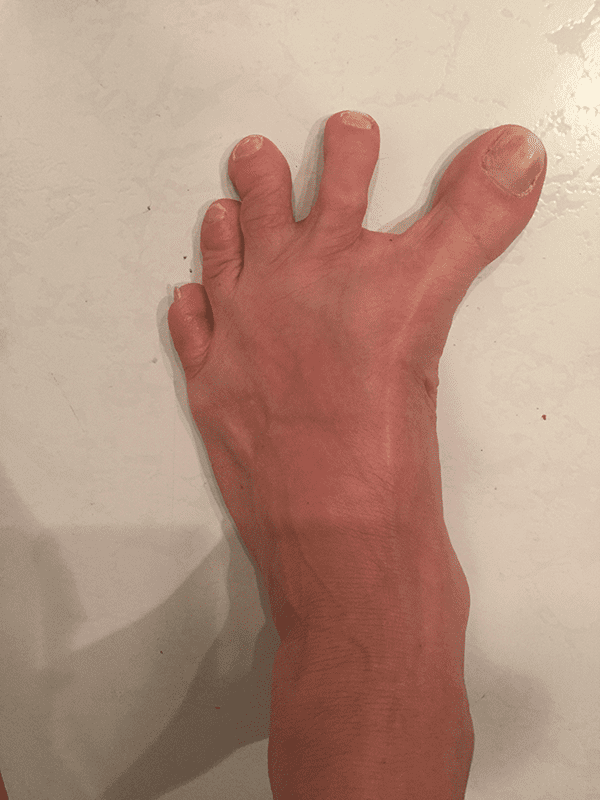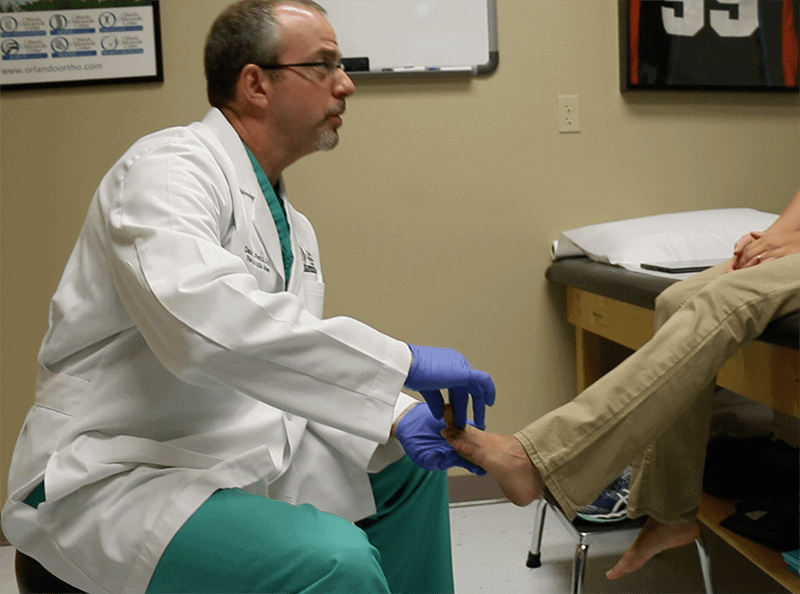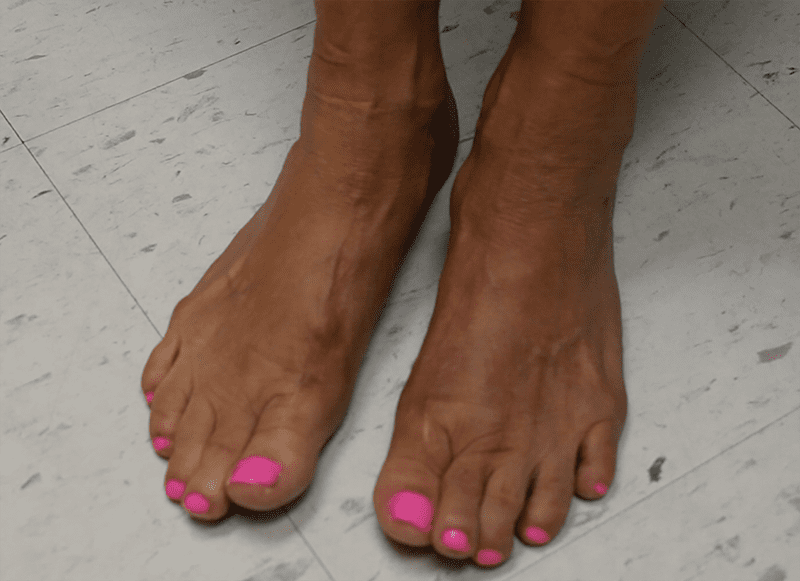Hammertoe Surgery and Recovery Patient Testimonial
Beth’s pain in her feet got to the point where she could barely walk a few blocks without experiencing severe discomfort. Beth suffered from a hammertoe in her right foot and intense stiffness and arthritis in the big toe joint of her left foot.
When she couldn’t bear the pain anymore, Beth turned to Daniel L. Wiernik, D.P.M., a board-certified foot and ankle surgeon specializing in podiatry and reconstructive rearfoot/ankle surgery at Orlando Orthopaedic Center.
Together Beth and Dr. Wiernik determined that double foot surgery would give her the greatest chance of success. “I had two surgeries, one a year ago and one six months ago,” says Beth. “The best thing that came out of surgery was that I have my quality of life back. I went from not being able to walk more than a half of a mile without being in excruciating pain to now walking several miles, being able to play tennis again, and having a much better quality of life.”
What is a Hammertoe?

Beth Pre-Bunionectomy Hammertoe Surgery
A hammertoe is a deformity causing the toe to bend upward at its midpoint often resembling a hammer. Hammertoes typically begin with weak or unbalanced muscles and often come about by wearing poor-fitting, compressed, high-heeled shoes.
As the front part of the foot is pressed down and forward into the shoe, the muscles and tendons of the toe weaken, causing disfigurement over time. Corns and calluses can also develop further aggravating the situation.
Individuals with longer toe bones, prone to toe injuries, and who have rheumatoid arthritis are more likely to develop hammertoes.
What Are the Treatments for Hammertoe?
In its early stages, if the toe has some degree of flexibility, non-surgical treatments may reduce the pain and swelling, and allow some semblance of normal activity. These include:
- Exercises to strengthen the toe
- Applying ice packs to reduce pain and inflammation
- Wearing loose fitting shoes
- Using custom orthotic devices or placing a pad around the affected toe to avoid rubbing against the shoe

Dr. Wiernik Beth Bunionectomy Hammertoe Surgery
However, if the toe is rigid or immovable with a high degree of discomfort, surgery may be necessary to improve the situation.
Beth appreciated the fact that Dr. Wiernik never put pressure on her to have surgery despite the severity of her condition. “I’m so grateful for that because the best thing about him is that I’ve been seeing him for a couple of years, and he never forced me into surgery,” says Beth. “He would say ‘how are you feeling,’ and I would say ‘It’s horrible. I’m in so much pain all the time.’ Then he would say ‘Well, I’ll give you a cortisone shot but it’s probably not going to help you too much. I think I can take care of your feet but it’s up to you.’”
“For about a year, I kept coming in every couple of months and got a cortisone shot in both my feet,” Beth continues. “Eventually, I told Dr. Wiernik ‘I have zero quality of life. I’m ready for a change, and I’m ready to take a chance.”
Beth decided to opt for surgery in the hope that it would provide a more permanent solution for her pain. “That’s what I did. (Dr. Wiernik) always said my feet were extraordinary – I think that’s because they were so horrible – it presented a good challenge for him,” Beth says.
How Are Hammertoe Surgeries Performed?

Beth After Bunionectomy Hammertoe Surgery
Beth’s first procedure was on her left foot and involved an arthrodesis of the first metatarsophalangeal joint (MPJ), which is the surgical immobilization of the big toe joint by fusing it with the adjacent bone. The arthrodesis was combined with a metatarsal osteotomy of the 2nd toe (next to the big toe). The metatarsal is the long bone in the foot that connects the toe to the middle of the foot. An osteotomy is when a surgeon cuts and shortens the second metatarsal to reduce pain and allow the toe to straighten.
Six months after the surgery on her left foot, it was time to correct and heal the hammertoe on her right foot. Beth underwent another arthrodesis of the first metatarsophalangeal joint (MPJ) with a hammertoe correction procedure on the 2nd toe.
“(Dr. Wiernik) was wonderful. He fixed my feet and I’m very grateful. I think you have to be comfortable with your doctor, comfortable with the person that is going to do surgery on you. I felt very comfortable with him, and I knew he was going to do what was best for me. And he did.”
After her successful foot surgeries, Beth wholeheartedly recommends Dr. Wiernik and his staff to anyone needing similar treatment. “Come in – run, walk, crawl, make an appointment,” says Beth. “I feel like you can’t go wrong. It’s so important. It’s your life. How long do you want to suffer? How long do you not want to have a quality of life? (Dr. Wiernik) can help you with that. I think he’s wonderful.”


